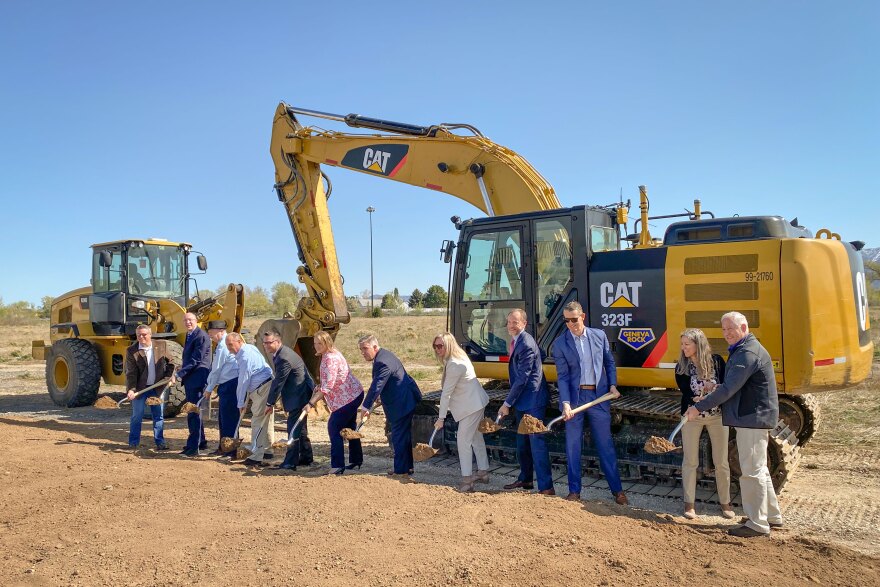City leaders in Clearfield broke ground Monday on a major project they hope will serve as a new community center that encourages more people to get around without driving.
Now mostly a parking lot surrounded by vacant land, officials envision the roughly 65-acre site next to the Clearfield Frontrunner train station as a mixed-use development with 1,000 units of housing, retail and office space, plus parks and entertainment.
Similar to the Point, another major development set to replace the current Utah State Prison, planners see the Clearfield site as a strategic location to accommodate growth along the Wasatch Front, while also tapping into the state’s existing public transit network.
“We'll never build I-15 big enough to handle all the cars,” said Nathan Ricks, founder of STACK Real Estate, a private development group involved in the project. “That's going to push more and more people to alternative forms of transit. And we believe that these Frontrunner stations are going to become critical components of not only the neighborhoods but also the economic development of the state.”
While the pandemic disrupted traffic patterns, Utah’s roads are expected to see a steady increase in drivers over the next few decades. Meanwhile, public transportation ridership — while up from its pandemic low — has still not reached pre-pandemic levels. There were about 100,000 average boardings in March 2022, compared to nearly 155,000 in March 2019.
These kinds of “transit-oriented development” projects can make people more likely to get out of their cars, said Andrew Gruber, executive director of the Wasatch Front Regional Council. It’s difficult to tease out precise data, but he said parts of the state have seen transportation shifts by concentrating jobs and attractions near housing, both to trains and buses and “active transportation.”
“What we've seen in Salt Lake City and Ogden and Provo is that if we can give people the option to live close to the park and to stores and to jobs, they're much more likely to walk or to bike,” he said. “It's good for our air quality and it's good for public health.”
Beth Holbrook, a Utah Transit Authority board member, said the goal is not to get everyone off the roads, but a segment of them. She said denser developments near transit lines are an important component of that, particularly as land constraints are making it more difficult and expensive to continue building outwards.
“Once you look at transit as this longer term answer of strategic investment, that does change the game,” she said. “But there are a lot of strategies we have to continue to work on.”
She said to make transit a viable option for more people, UTA is working on building out its east-west connections and providing more “first and last mile” options to connect people from their homes and destinations to transit stops.





